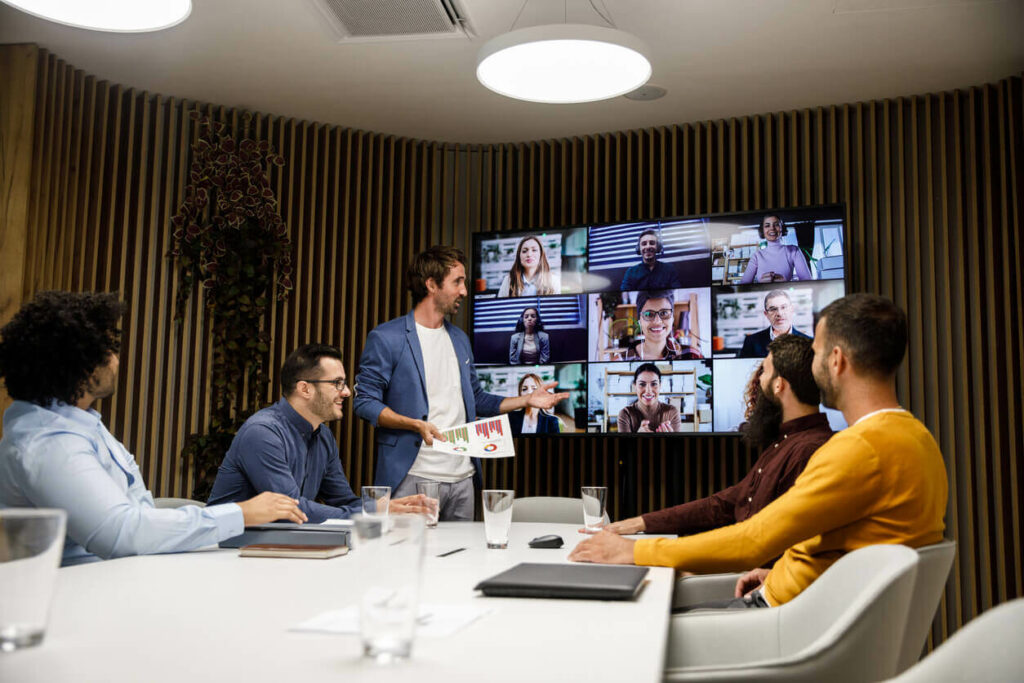The COVID-19 Pandemic influenced the world in a major way, and while some of those impacts are slowly returning to the way things were before the virus, one thing is resisting the pressure to return to normalcy: the workplace. Instead of returning to the in-person 9 to 5, businesses are opting for a more flexible workplace model known as hybrid offices.
What is a Hybrid Office?
Hybrid offices, or hybrid workplaces, are flexible office spaces designed to increase productivity and employee satisfaction by offering both in-office and remote work options. The hybrid model gives employees flexibility to work from wherever they work best, whether that be a home office, a desk next to the break room, or halfway around the world. With that in mind, it’s worth noting that today’s hybrid workplaces differ from hybrid or ad hoc remote work of the past in several ways.What ‘Hybrid’ used to look like:
Fixed Schedules
Early adopters of the hybrid office scheduled employees’ in-office days weeks or months in advance. These schedules were often set by management and stuck strictly to regular 9 to 5 working hours.Accommodation for Remote Employees
Some businesses implemented a hybrid workplace as a way to accommodate hired employees working out of state or from another country. Employees based in the same state as the office were required to come in to work, but those others were allowed to work from home permanently.The Office as a Workplace
Even those first companies to employ a hybrid system viewed the office as the primary workplace, with working from home being available to employees when circumstances required.What ‘Hybrid’ looks like today:
Flexible Schedules
Instead of your boss telling you when to be in the office, companies today are putting systems in place that let employees pick and choose when the days and hours they will be in the office. These schedules aren’t always set in advance and do not require employees to stick to ‘normal’ work hours.Accommodation for All Employees
Wherever you call home, today’s hybrid businesses often don’t require employees to hit a certain number of days or hours in-office. This means that all employees have the flexibility to come in to work, work from home, or travel without disconnecting.The Office as a Collaboration Space
Hybrid workplaces see the office as a space for collaboration & connection. These businesses understand that work can be done anywhere, but employees need a place to gather together to collaborate, strengthen culture, and problem-solve as teams. All that said, what are the benefits of switching to a hybrid office? The challenges? Before pulling the trigger, know that going hybrid is like anything else in that it carries both pros and cons.Benefits of a Hybrid Workplace
- Productivity increases. Employees who are allowed to work from wherever they work best, their productivity jumps to new levels.
- Employee satisfaction rises. Studies show that employees who work remotely are happier and experience lower stress levels than those who don’t.
- Lower costs. Businesses and employees both save money in a hybrid office. Businesses can cut down on office space, reducing spending on rent and supplies, and employees are able to save on commute costs.
- Reduced turnover. Companies who operate as hybrid workplaces see 25% lower employee turnover rates compared to businesses who don’t allow remote work.
Challenges of a Hybrid Workplace
- Lack of routine. Switching back and forth from remote to in-office work makes it hard to settle into a proper routine.
- Limited face to face time. Probably the biggest flaw to hybrid offices is the lack of opportunities to socialize and collaborate on a daily basis. Fortunately, emerging tech is working hard to solve that problem.
- Communication holes. For managers and junior employees alike, being able to approach a co-worker with questions or for a private conversation is hugely important. Both are harder to do in a hybrid office.
